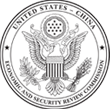
This report below, prepared for the Commission by OTH Intelligence Group LLC, details China’s rapid development of mature remote sensing capabilities in pursuit of its economic and societal development, national security and geopolitical interests, and military modernization. Remote sensing is transforming a wide range of industries, scientific research, civil-government activities, and defense activities by providing a systematic means of collecting and processing data frequently from a bird’s eye view, which enhances understanding of what is happening on Earth.
Some Key Findings Include:
-
China prioritizes remote sensing research in support of national objectives, including: 1) increasing competitiveness and ensuring market position in select strategic industries; 2) national development, digitalization of the economy and society, and provision of public goods and services; 3) broader geopolitical engagement and objectives; and 4) People’s Liberation Army (PLA) modernization efforts.
-
China has narrowed the technological gap in remote sensing: While the United States is viewed as the global leader in currently deployed remote sensing technologies generally, China has closed the gap in terms of technological development in most applications and sectors. China is currently leading the world in research impact in several remote sensing technology areas, including applications of multispectral and hyperspectral imaging sensors, radar, and satellite positioning and navigation.
-
Advancement of China’s remote sensing poses challenges and risks for U.S. national and economic security, including: 1) advanced PLA abilities to observe, detect, and target US and allied assets, interests, and personnel; 2) potential for China to gain entrenched advantage in remote sensing platform and technology areas vital for the growth of emerging market areas; and 3) use of Chinese remote sensing systems in the United States, creating data and infrastructure security challenges.
-
Chinese investments in U.S. advanced remote sensor companies: China is using both licit and illicit methods to gain know-how and expertise and mature remote sensing technologies. Acquisition through investment in automotive LiDAR firms has been particularly successful, although Chinese investment groups have also participated in deals to acquire space-based remote sensing companies.
-
China is a near peer or peer in military remote sensing, creating new and enhanced dilemmas for U.S. and allied military planners: The United States will face a PLA with improved intelligence, tracking, and targeting capabilities, complicating efforts to deter or carry out military operations within the second island chain in the Indo-Pacific.
